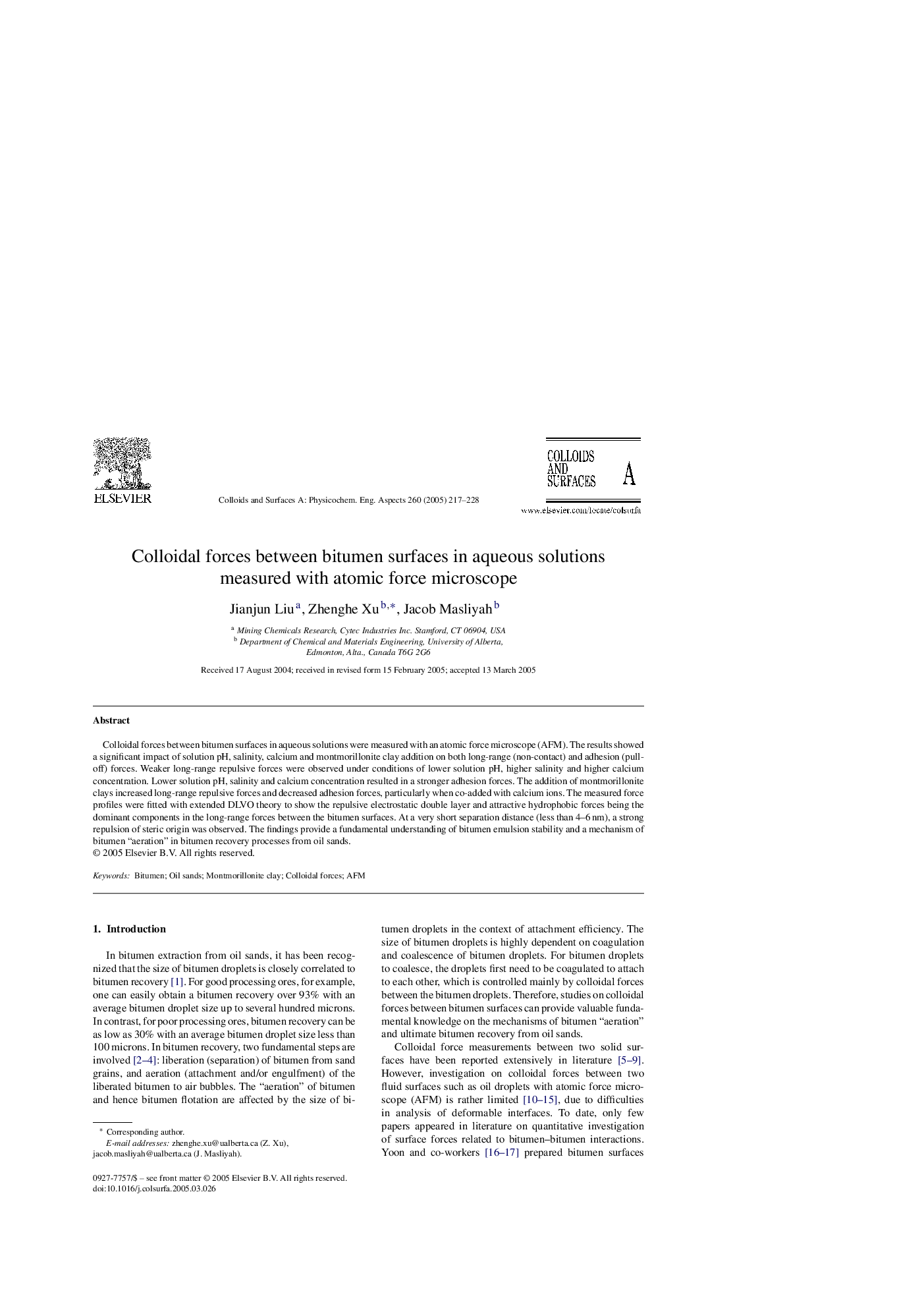| Article ID | Journal | Published Year | Pages | File Type |
|---|---|---|---|---|
| 9675887 | Colloids and Surfaces A: Physicochemical and Engineering Aspects | 2005 | 12 Pages |
Abstract
Colloidal forces between bitumen surfaces in aqueous solutions were measured with an atomic force microscope (AFM). The results showed a significant impact of solution pH, salinity, calcium and montmorillonite clay addition on both long-range (non-contact) and adhesion (pull-off) forces. Weaker long-range repulsive forces were observed under conditions of lower solution pH, higher salinity and higher calcium concentration. Lower solution pH, salinity and calcium concentration resulted in a stronger adhesion forces. The addition of montmorillonite clays increased long-range repulsive forces and decreased adhesion forces, particularly when co-added with calcium ions. The measured force profiles were fitted with extended DLVO theory to show the repulsive electrostatic double layer and attractive hydrophobic forces being the dominant components in the long-range forces between the bitumen surfaces. At a very short separation distance (less than 4-6Â nm), a strong repulsion of steric origin was observed. The findings provide a fundamental understanding of bitumen emulsion stability and a mechanism of bitumen “aeration” in bitumen recovery processes from oil sands.
Related Topics
Physical Sciences and Engineering
Chemical Engineering
Colloid and Surface Chemistry
Authors
Jianjun Liu, Zhenghe Xu, Jacob Masliyah,
